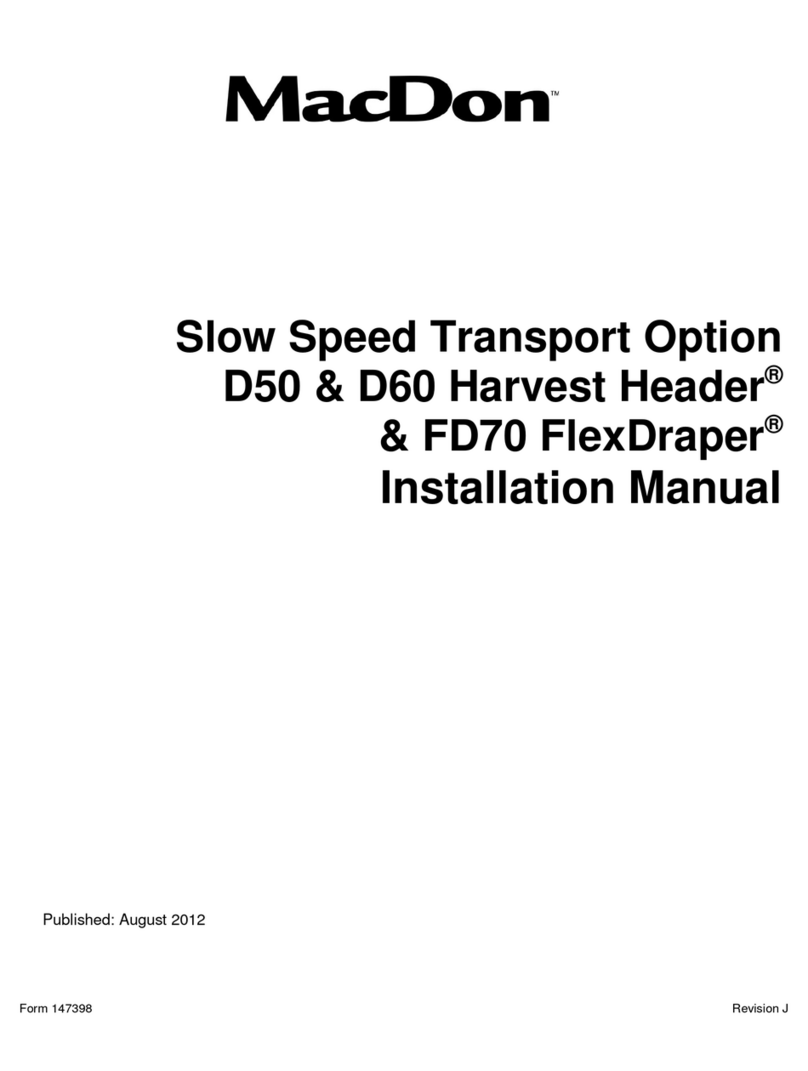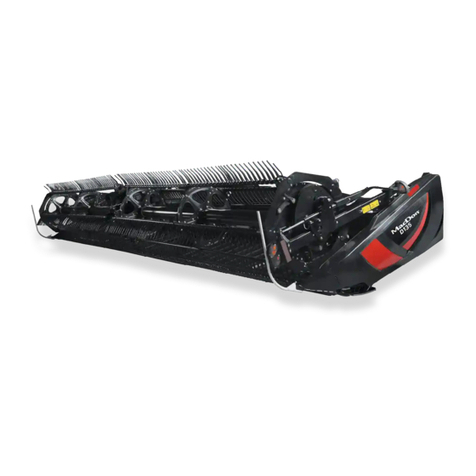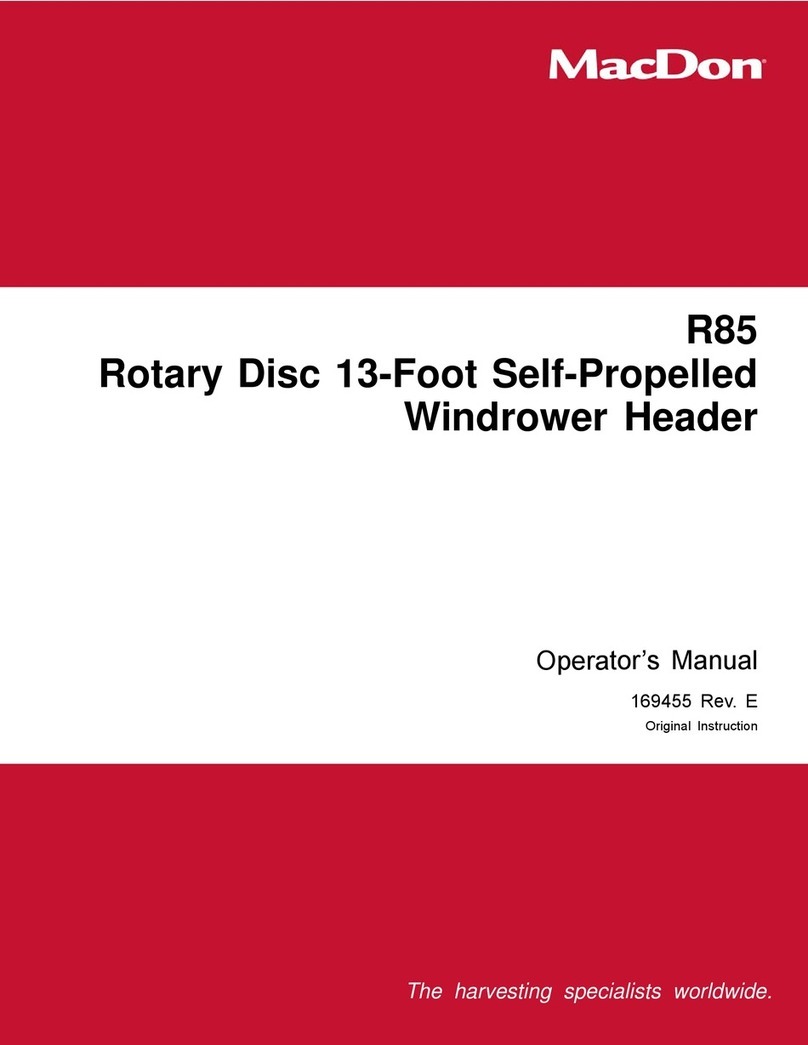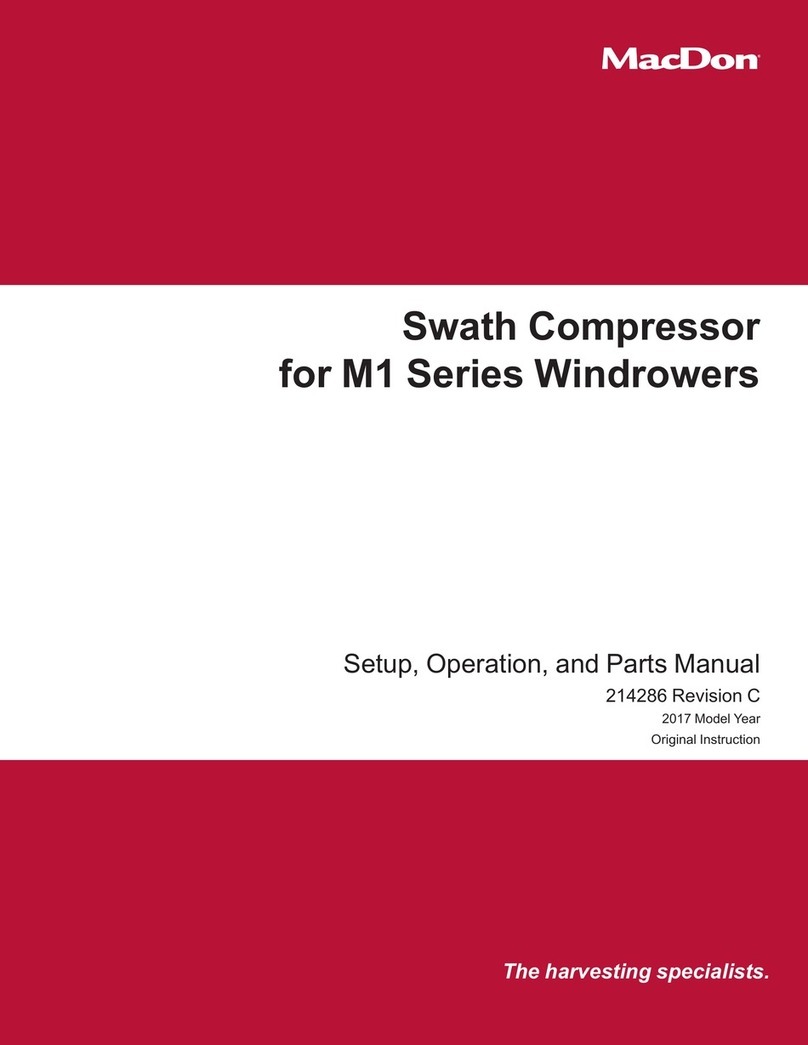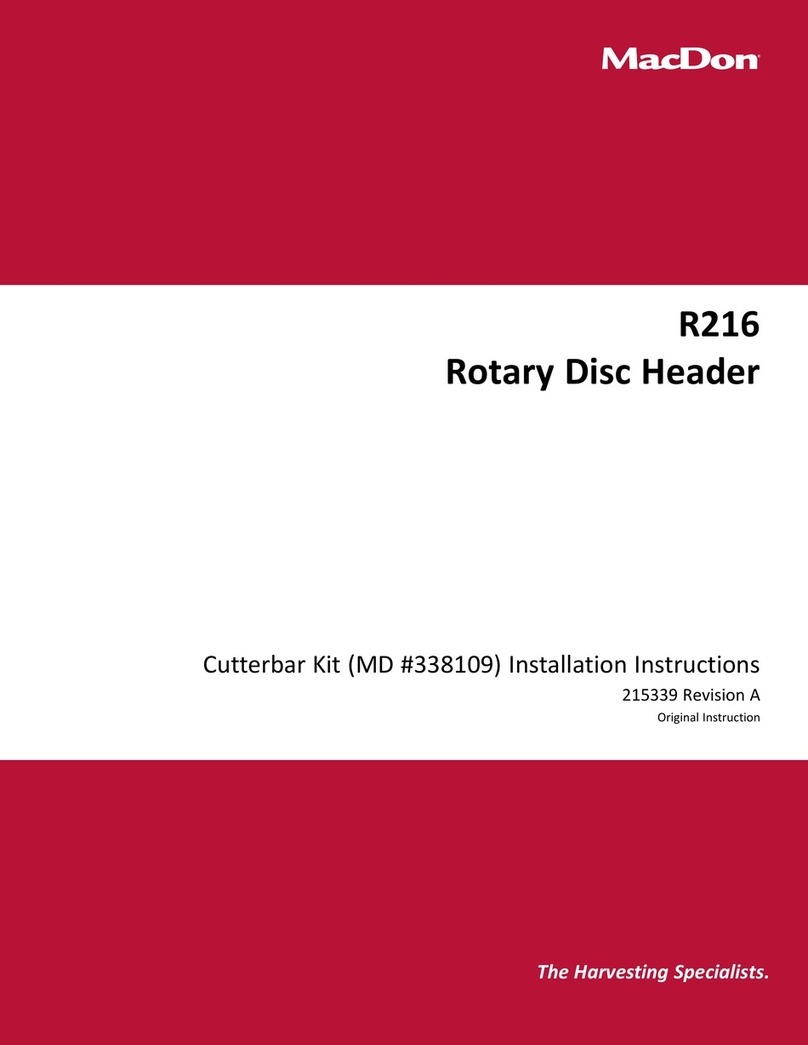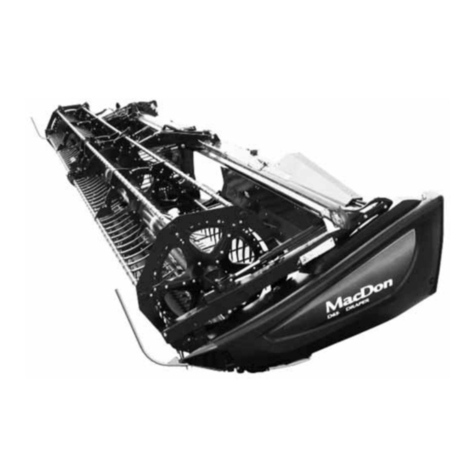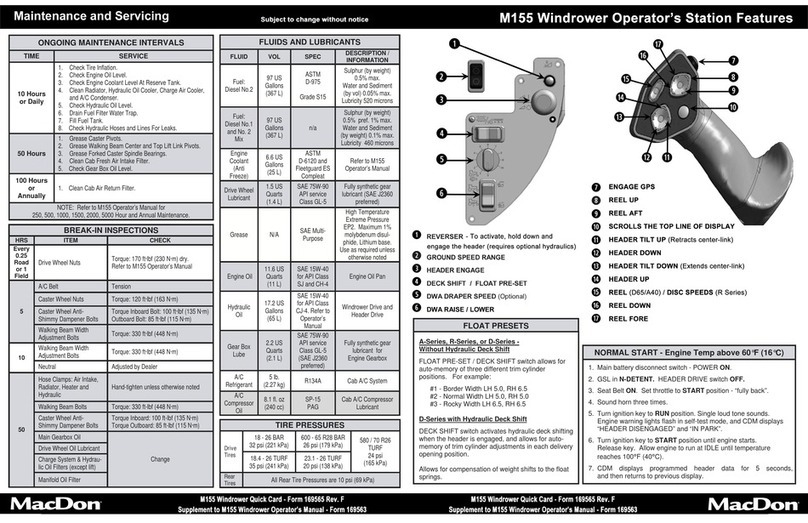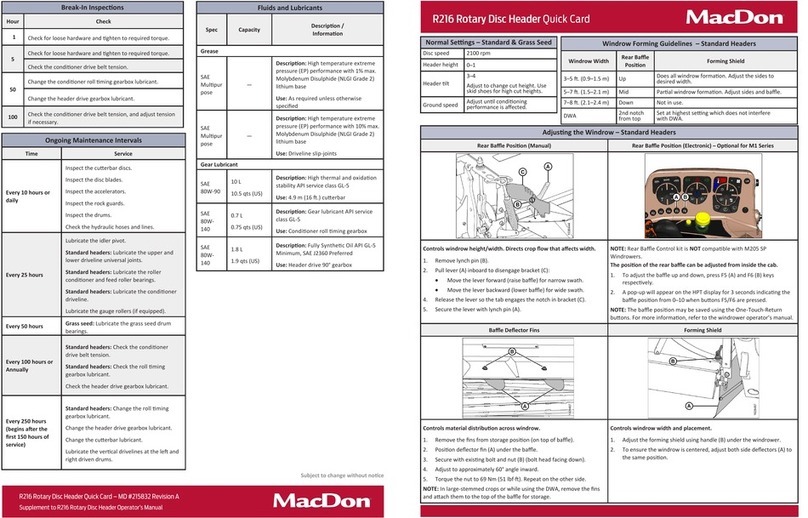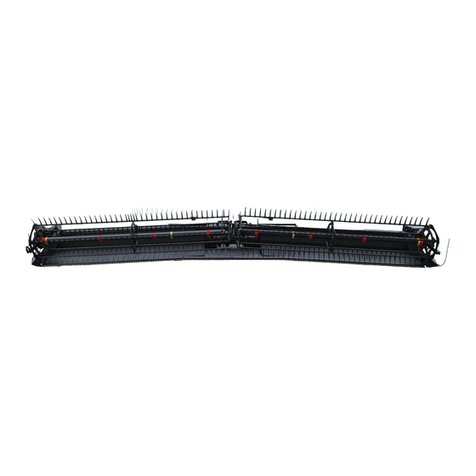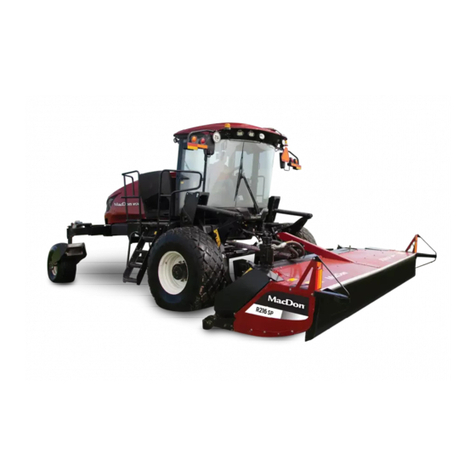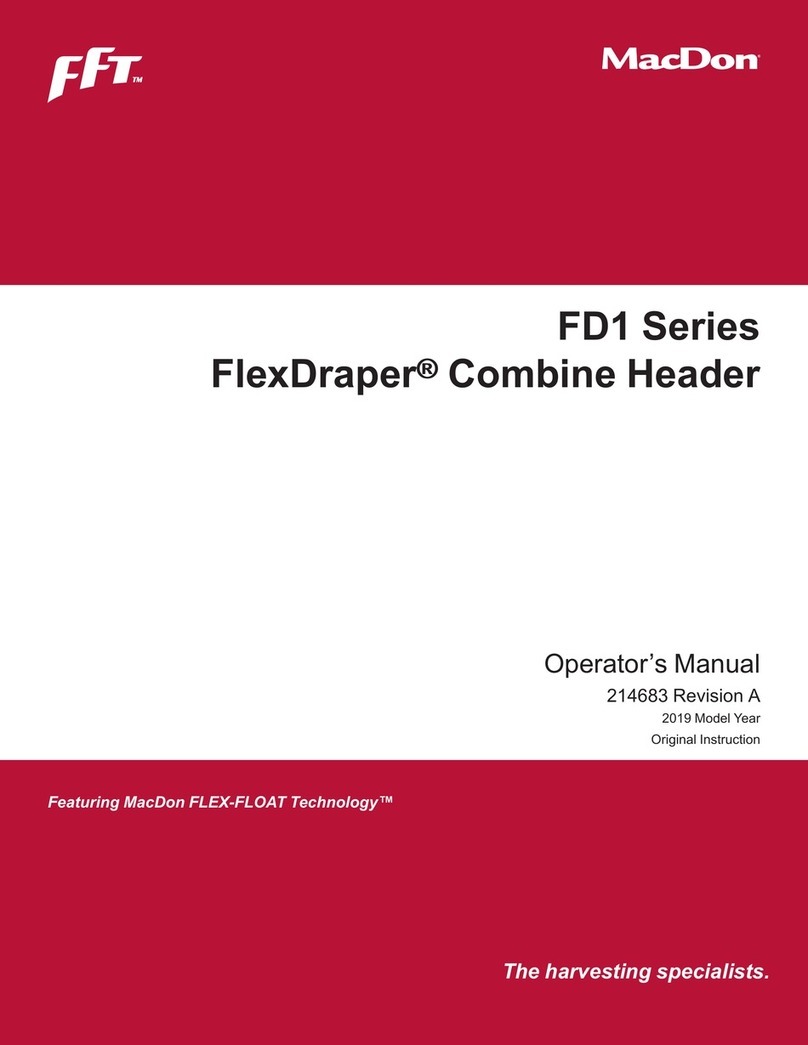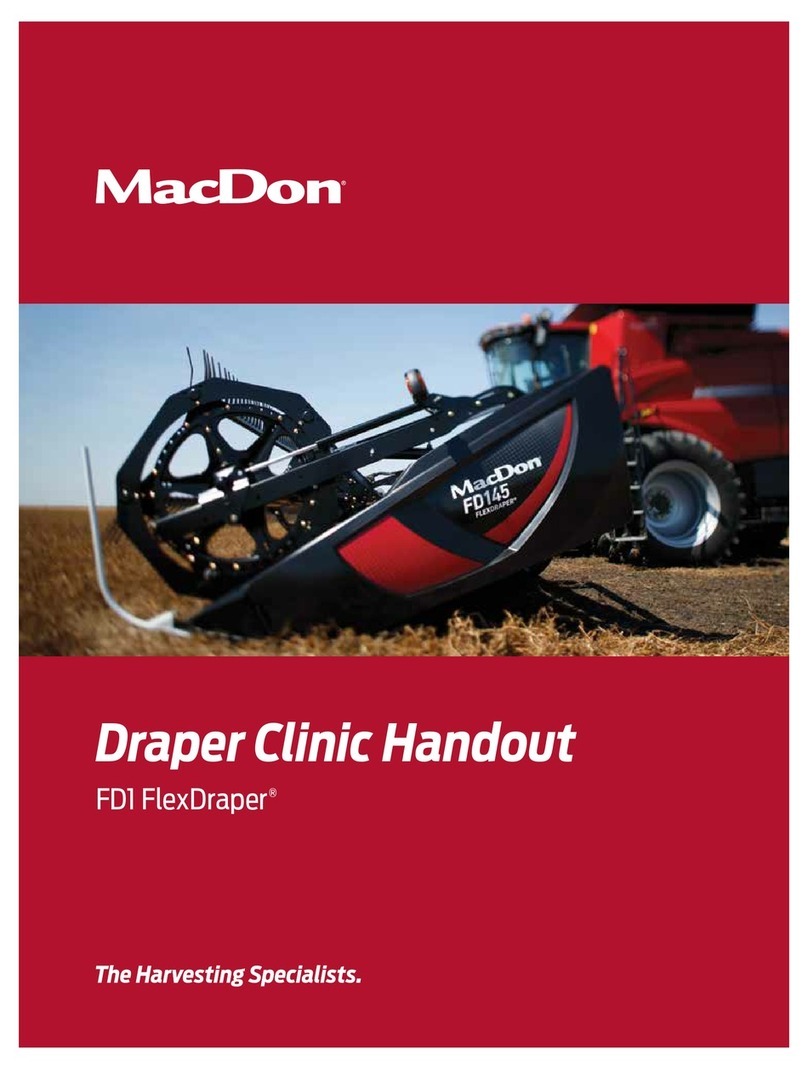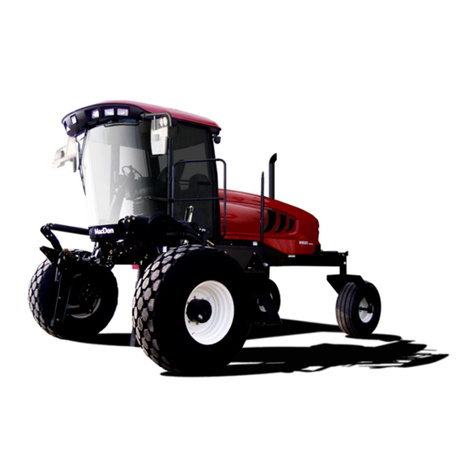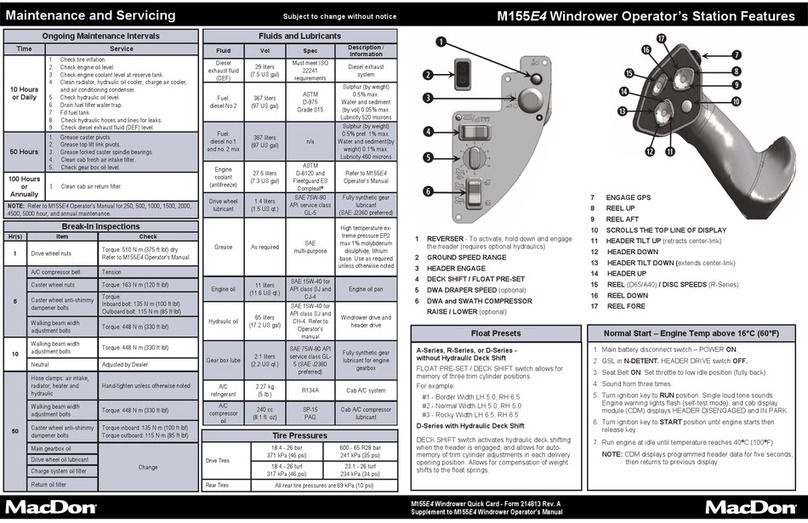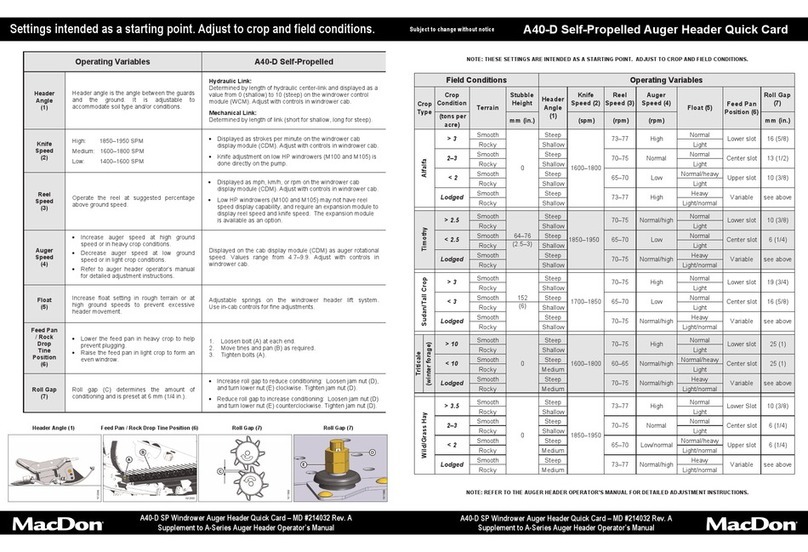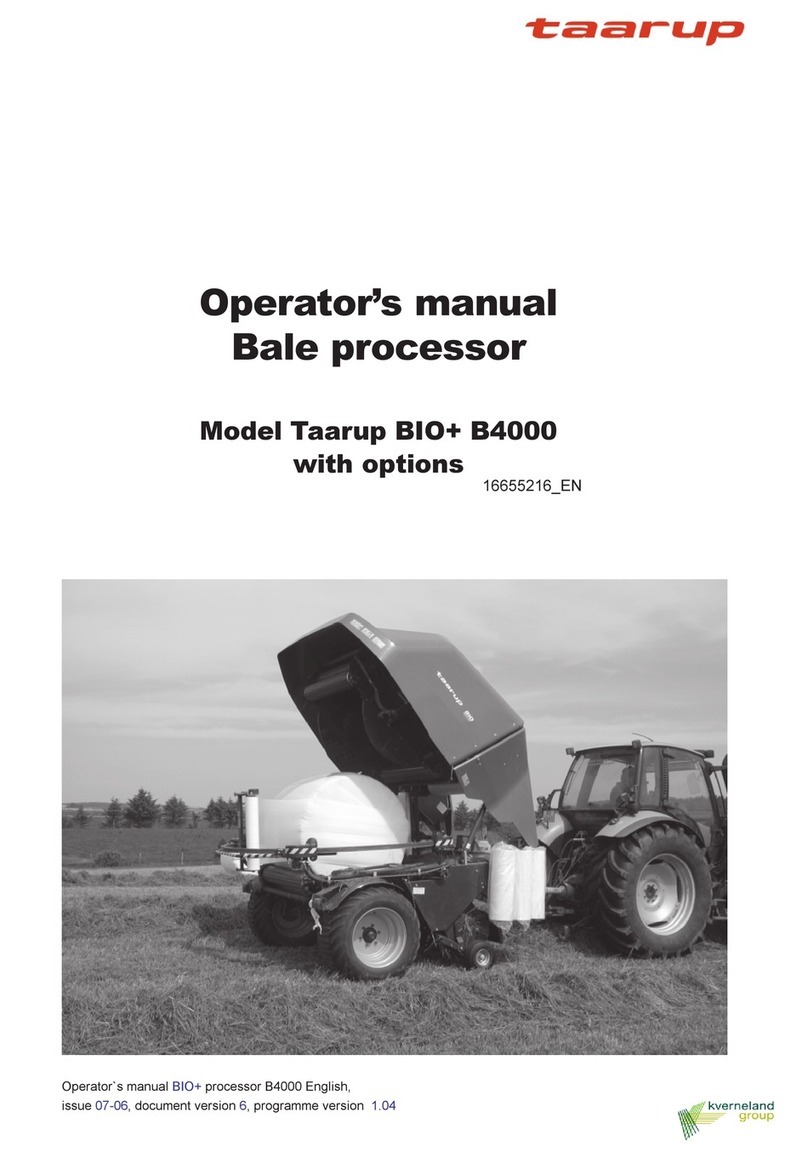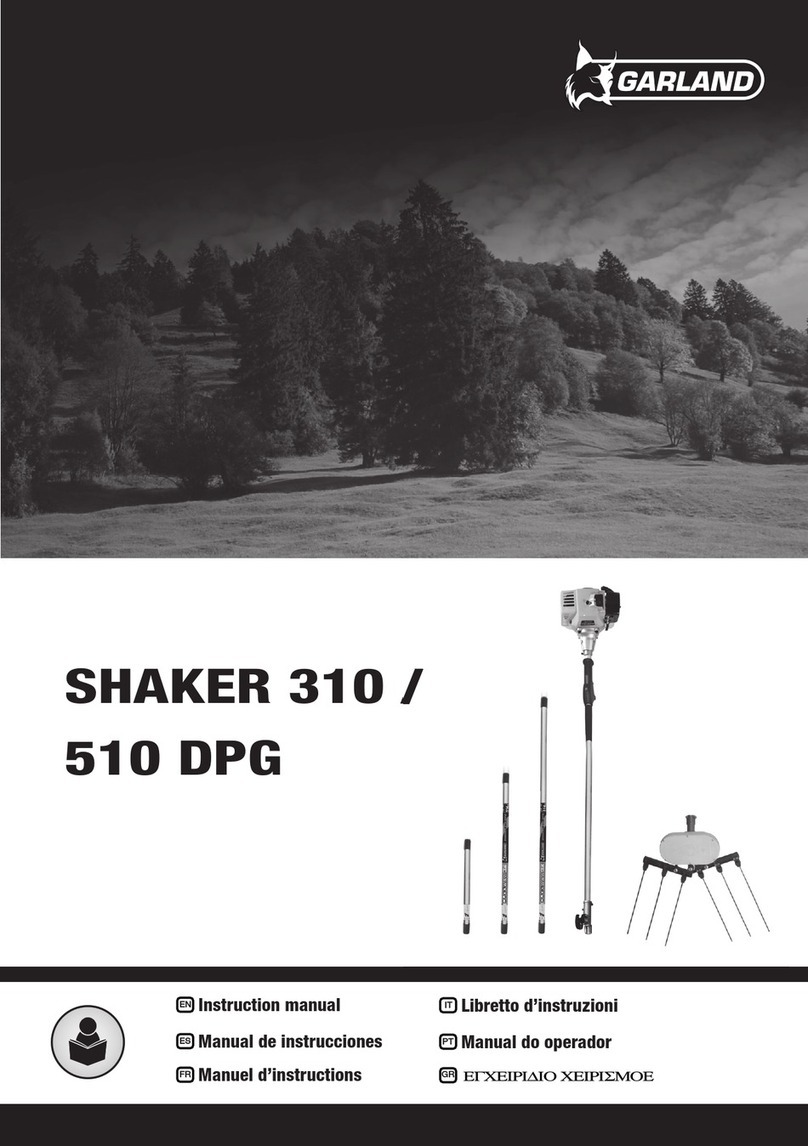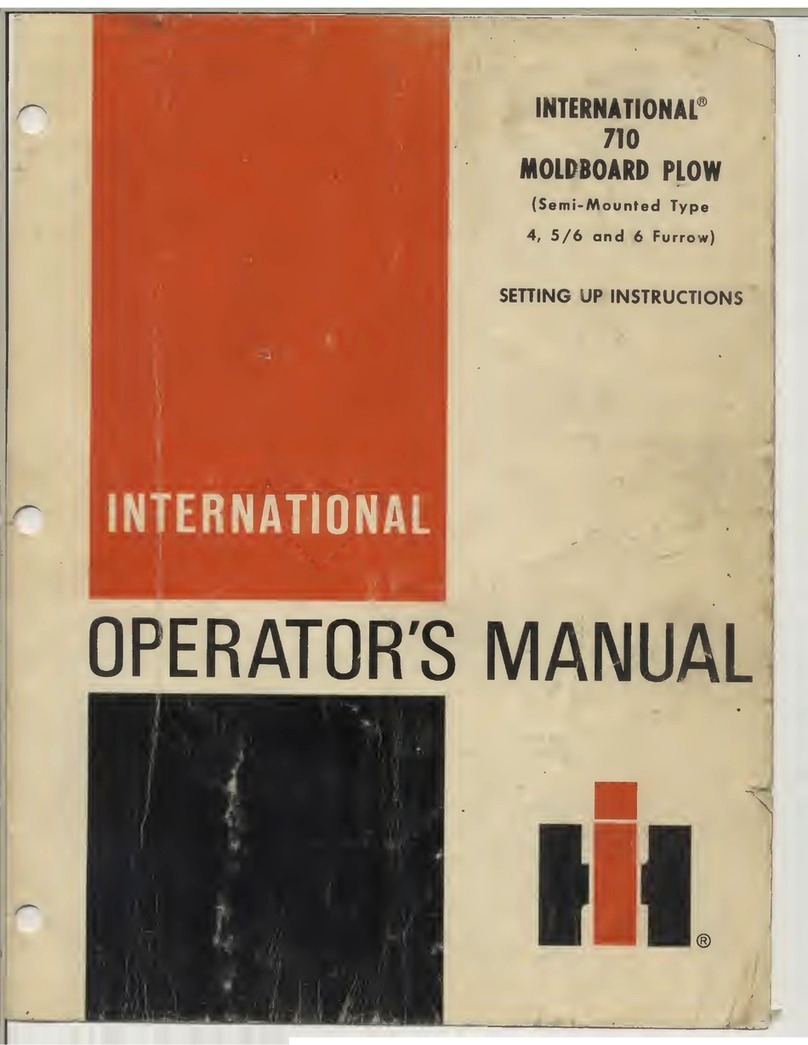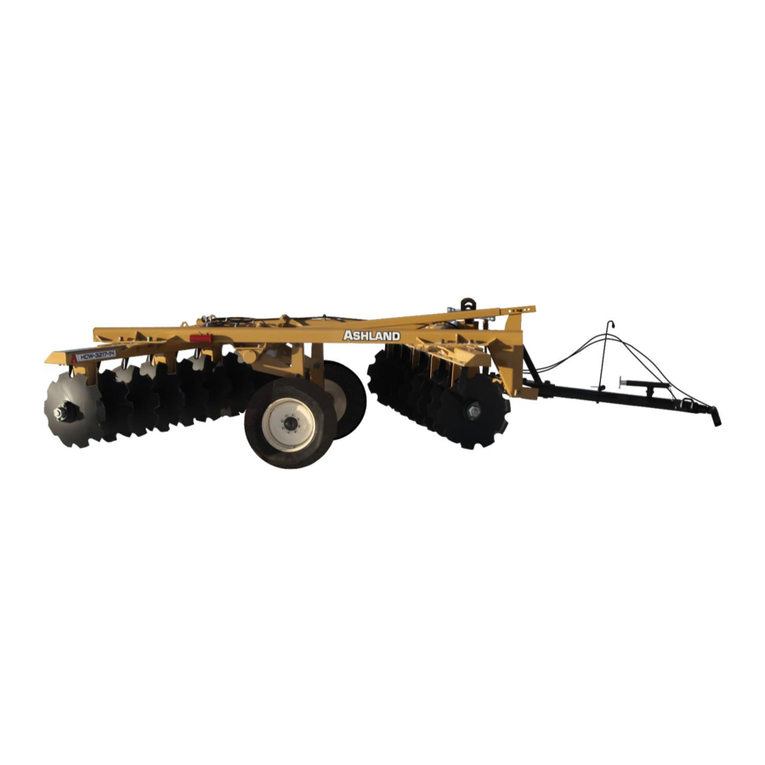
TABLE OF CONTENTS
4.2 Operational Safety......................................................................................................................... 64
4.2.1 Shutting Down the Machine .................................................................................................... 64
4.3 Attaching Hay Conditioner to Header..............................................................................................65
4.4 Detaching Hay Conditioner from Header ......................................................................................... 66
4.4.1 Detaching Hay Conditioner: Windrower Method....................................................................... 66
4.4.2 Detaching Hay Conditioner: Lifting Method.............................................................................. 70
4.5 Detaching Feed Deck and Rock Grate............................................................................................ 74
4.6 Break-in Period.............................................................................................................................. 77
4.7 Preseason Check .......................................................................................................................... 78
4.8 Daily Startup Check....................................................................................................................... 79
4.9 Conditioner Operation.................................................................................................................... 80
4.9.1 Roll and Feed Draper Speed................................................................................................... 80
4.9.2 Adjusting Roll Gap ................................................................................................................. 80
4.9.3 Checking and Adjusting Roll Timing......................................................................................... 81
4.9.4 Adjusting Conditioner Roll Tension ......................................................................................... 83
4.9.5 Forming Shields..................................................................................................................... 83
Adjusting Forming Shield Height...................................................................................... 84
Adjusting Side Deflectors ................................................................................................ 84
Adjusting Rear Deflector (Fluffer Shield)........................................................................... 85
Adjusting Deflector Fins .................................................................................................. 85
4.9.6 Unplugging the Conditioner..................................................................................................... 85
4.10 Storage......................................................................................................................................... 86
5 Maintenance........................................................................................................................................ 87
5.1 Preparation for Servicing................................................................................................................ 87
5.2 Recommended Safety Procedures..................................................................................................88
5.3 Drive Shields................................................................................................................................. 89
5.4 Lubrication .................................................................................................................................... 90
5.4.1 Lubricants.............................................................................................................................. 90
5.4.2 Greasing Procedure ............................................................................................................... 90
5.4.3 Lubrication Points................................................................................................................... 91
5.5 Hydraulics..................................................................................................................................... 94
5.5.1 Hydraulic Hoses and Lines .....................................................................................................94
5.6 Feed Draper.................................................................................................................................. 95
5.6.1 Adjusting Feed Draper Tension ............................................................................................... 95
5.7 Drive Belt...................................................................................................................................... 96
5.7.1 Adjusting Drive Belt Tension.................................................................................................... 96
5.7.2 Adjusting Drive Belt Pulley Alignment ...................................................................................... 97
5.7.3 Checking and Adjusting Drive Belt Tracking............................................................................. 98
5.7.4 Removing Drive Belt .............................................................................................................100
5.7.5 Installing Drive Belt ...............................................................................................................100
5.8 Maintenance Schedule..................................................................................................................102
5.9 Troubleshooting............................................................................................................................104
6Repa
ir Parts .......................................................................................................................................107
6.1 Abbreviations ...............................................................................................................................107
6.1.1 Serial Number Breaks ...........................................................................................................107
6.2 Lower Roll and Frame Assembly ...................................................................................................108
6.3 Upper Roll Assembly ....................................................................................................................110
6.4 Cover and Supports......................................................................................................................112
6.5 Hydraulic Motor, Mounts, and Tensioner.........................................................................................116
6.6Belt Drive and Shield ....................................................................................................................120
6.7Hydraulic Completion Package......................................................................................................122
6.8Gears and Roll Coupling Assembly................................................................................................126
6.9Forming Shields ...........................................................................................................................128
169254 ivRev. D

